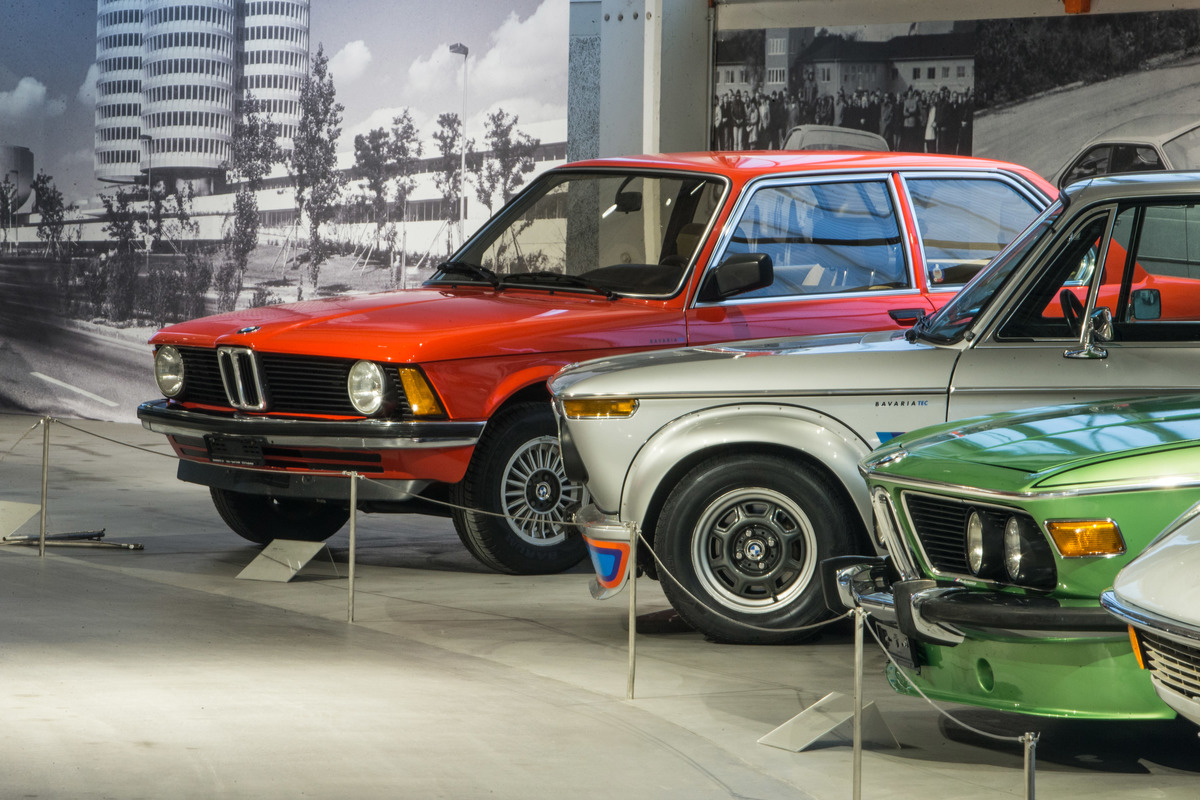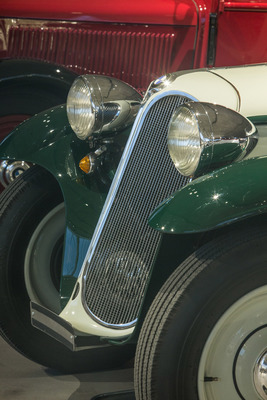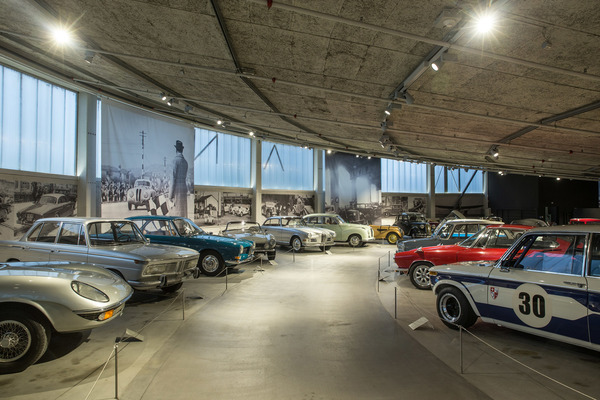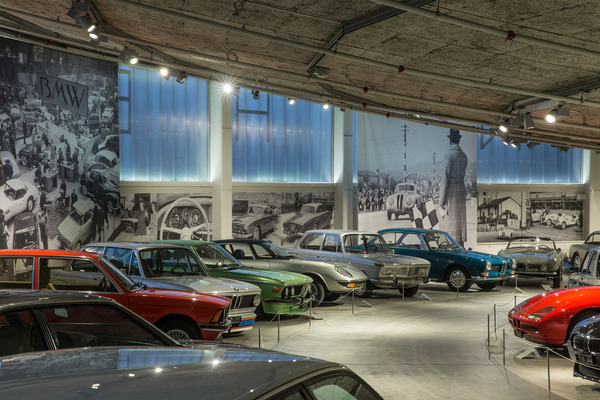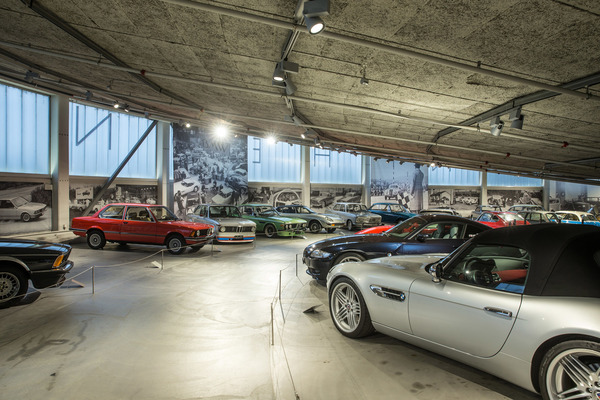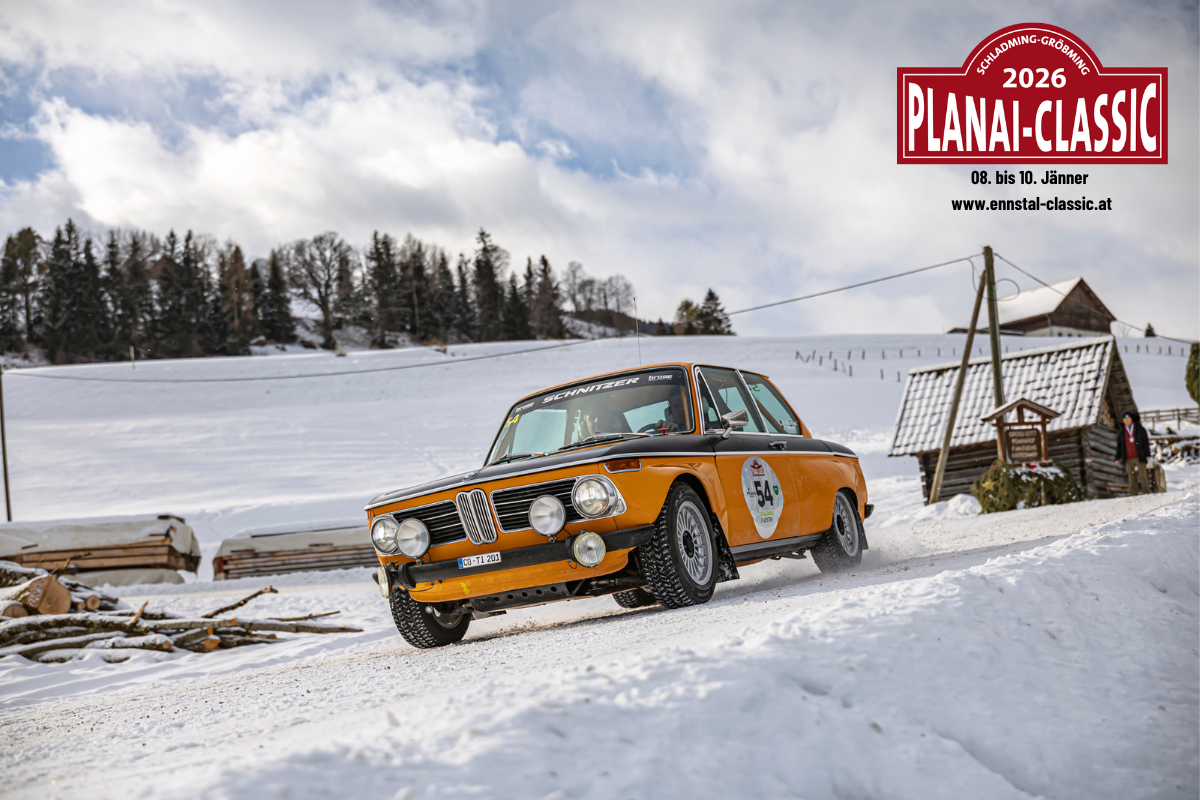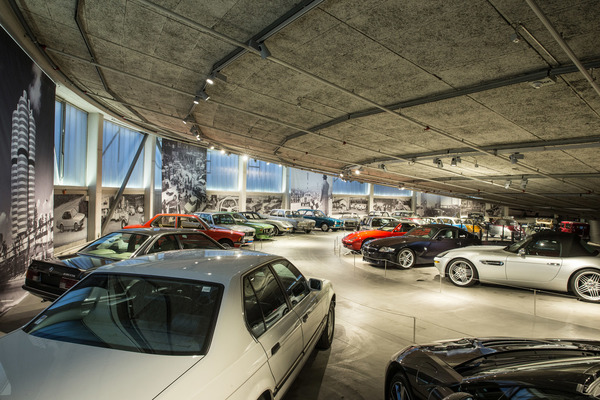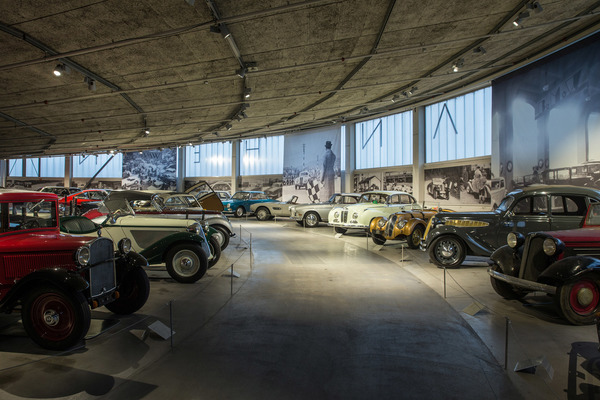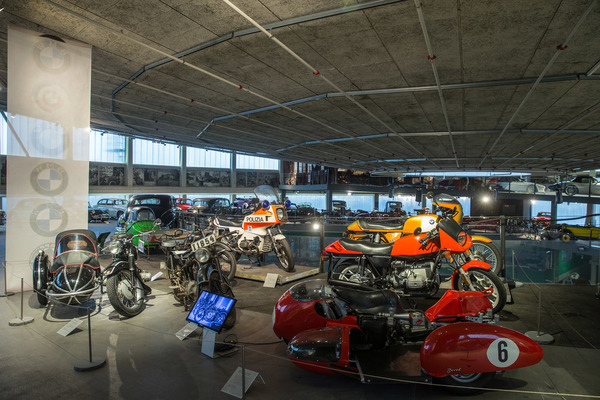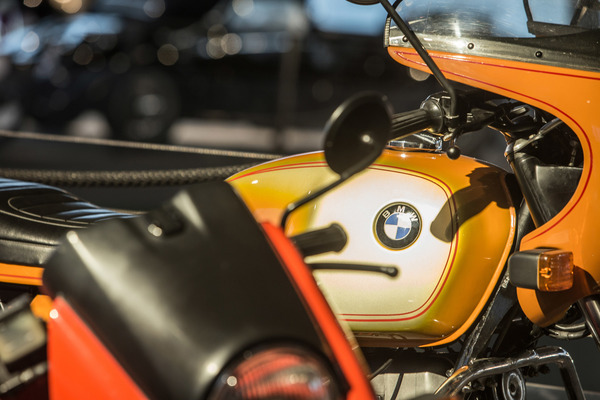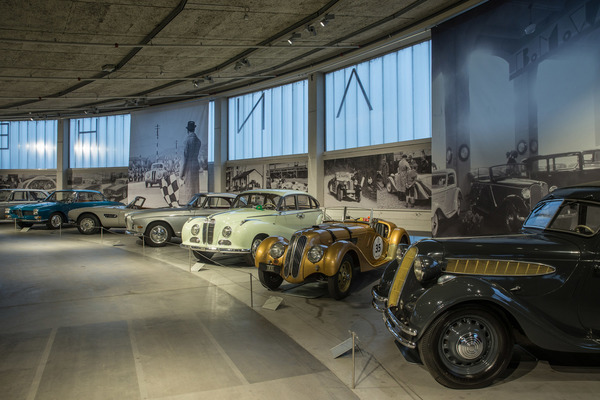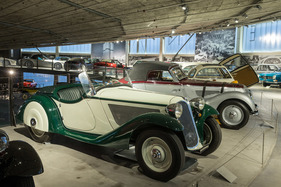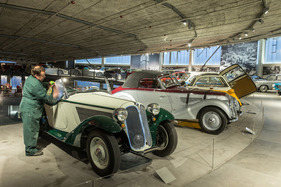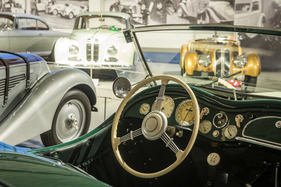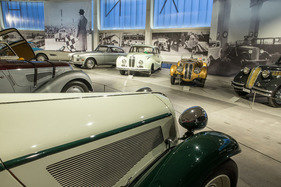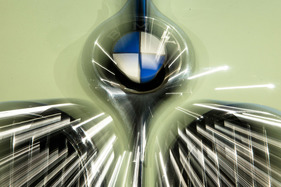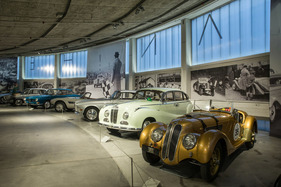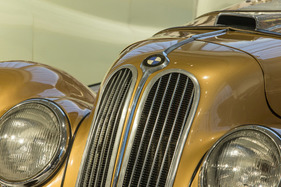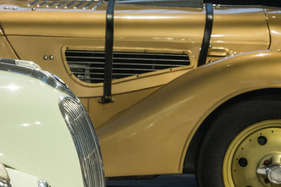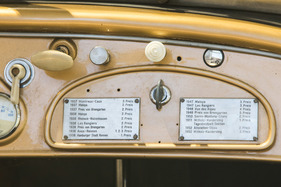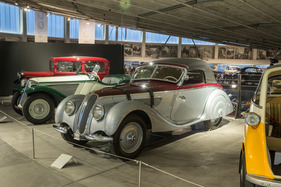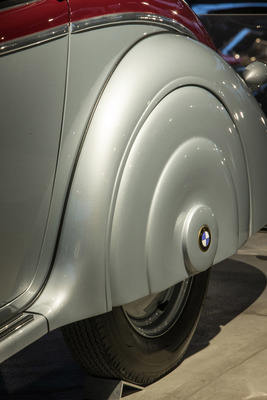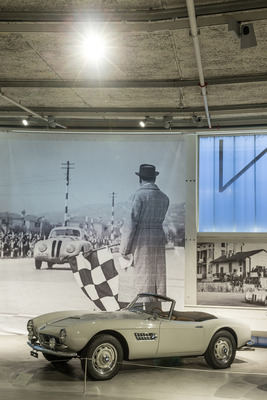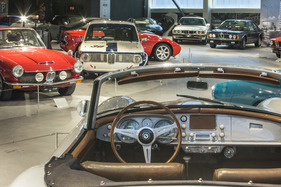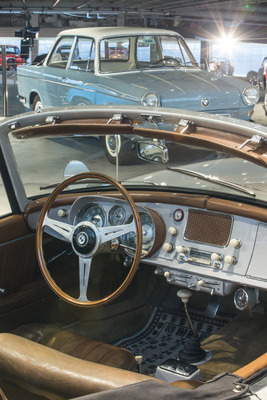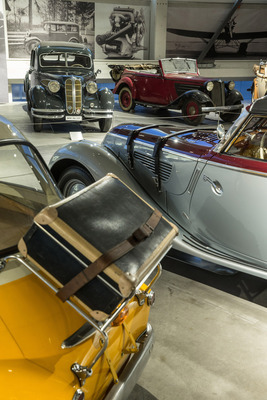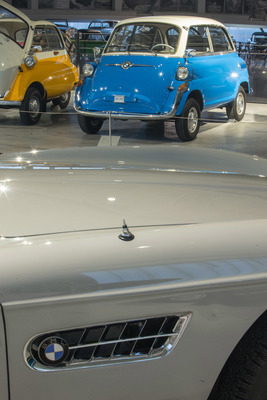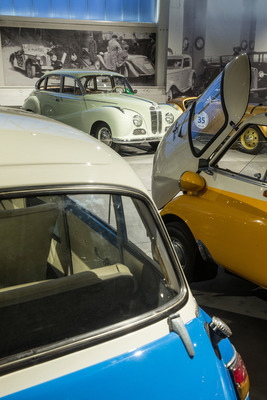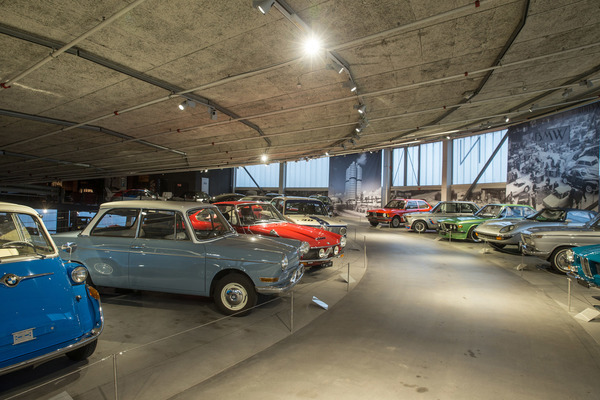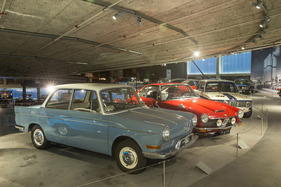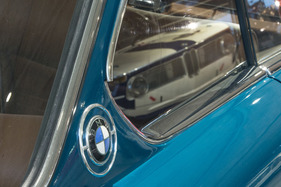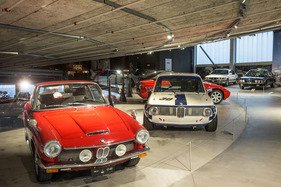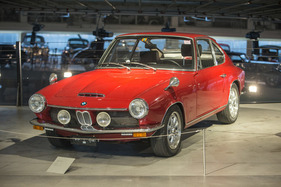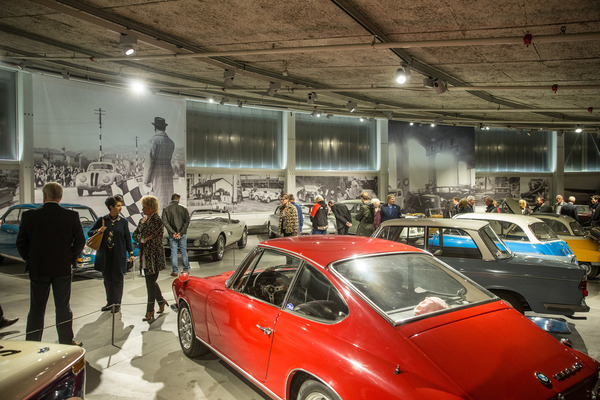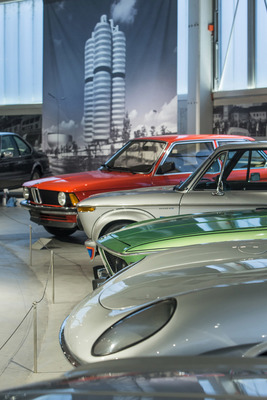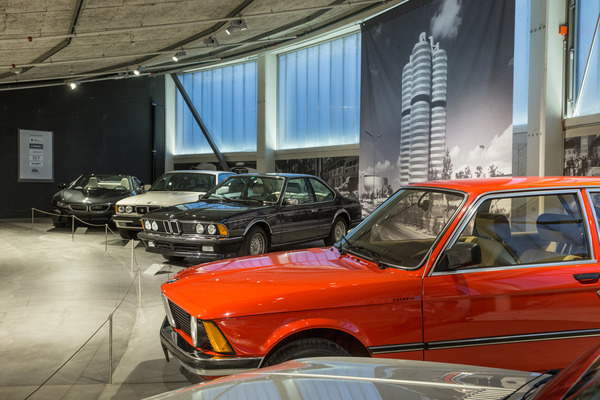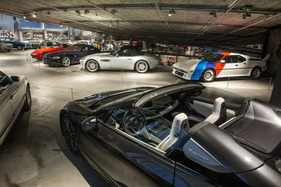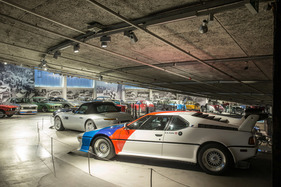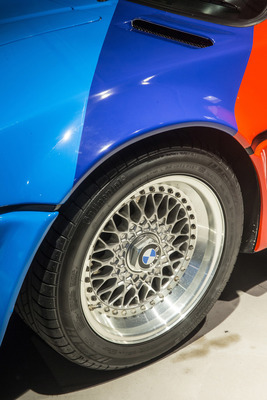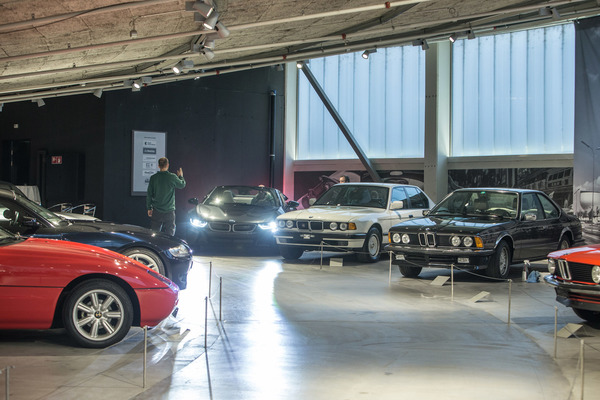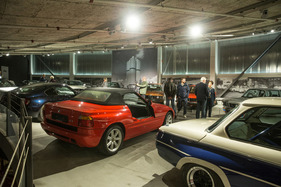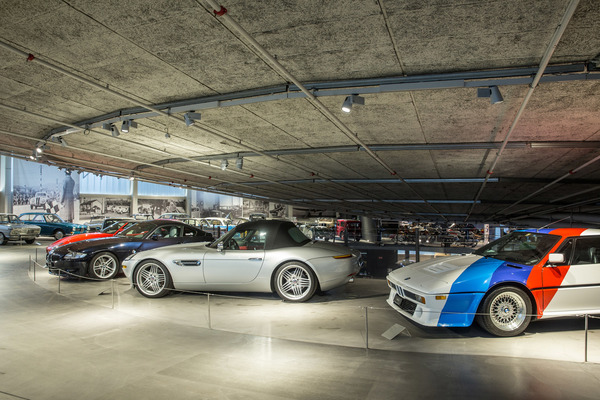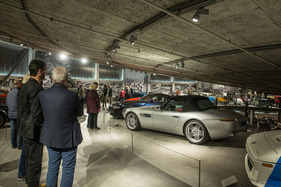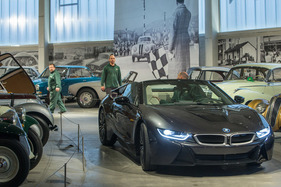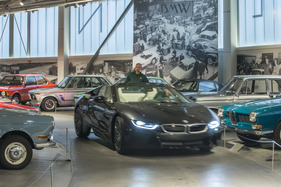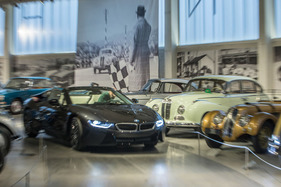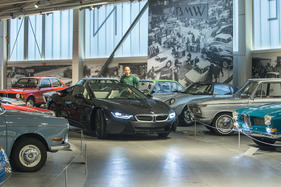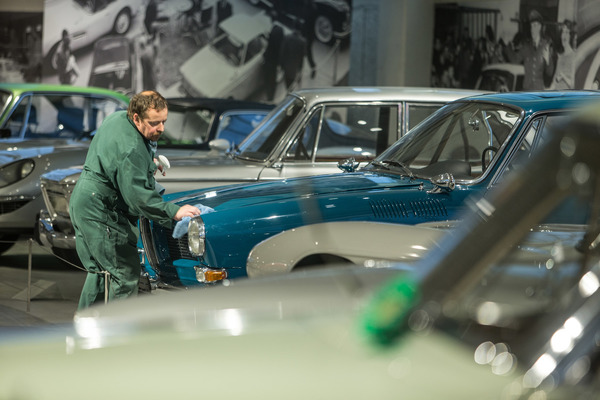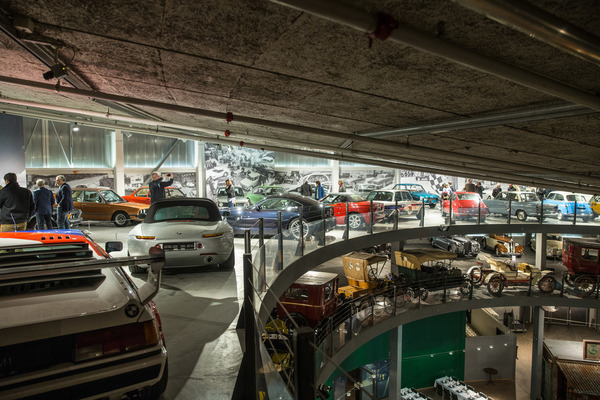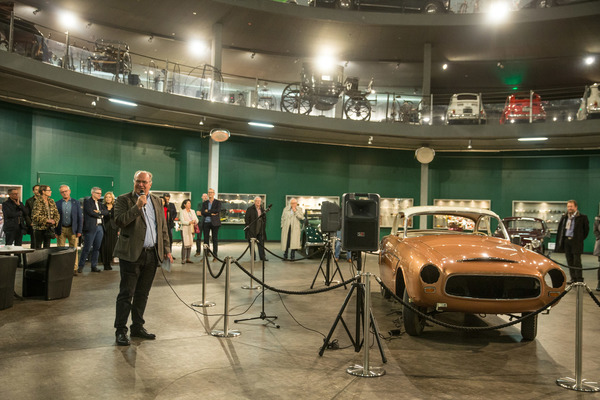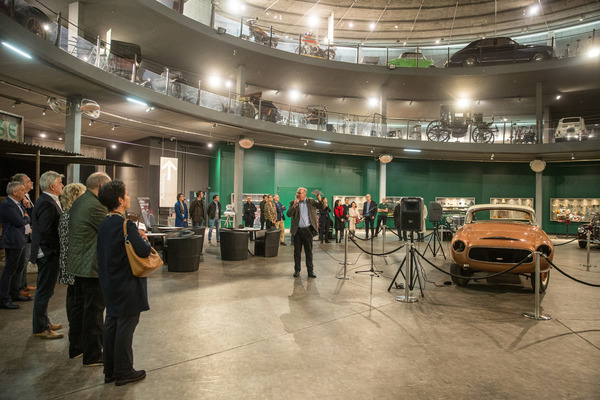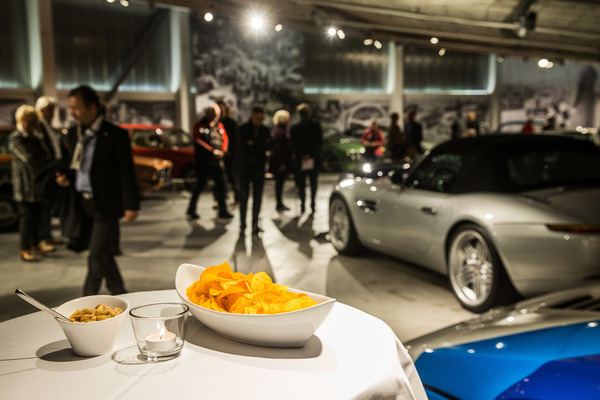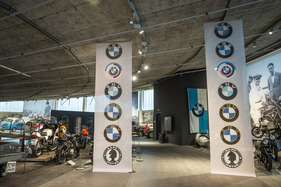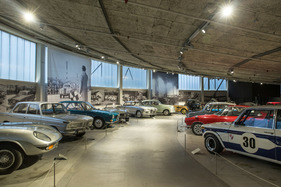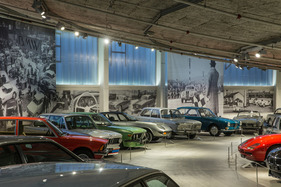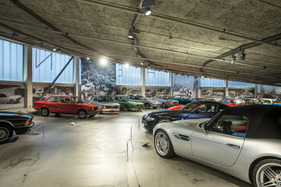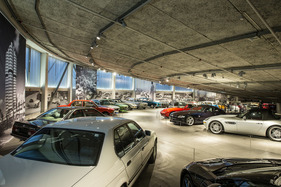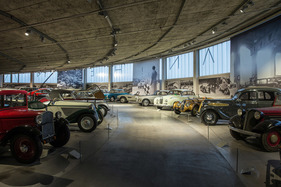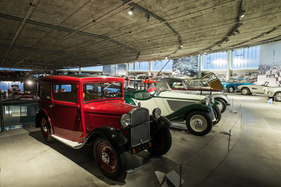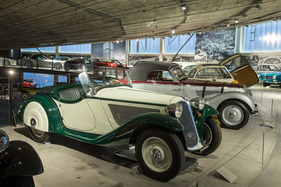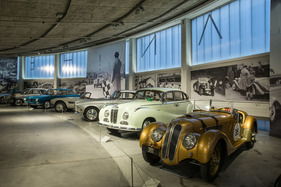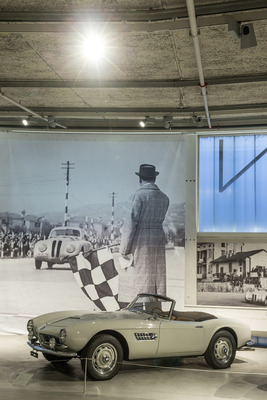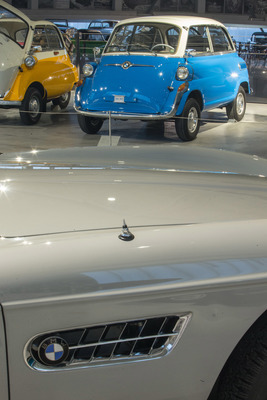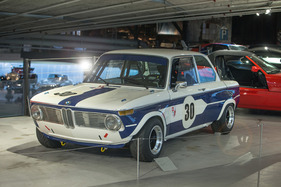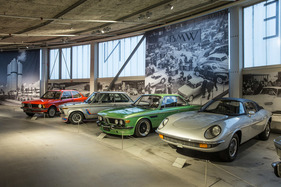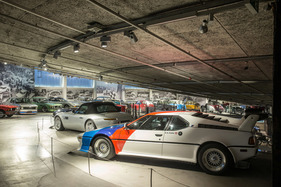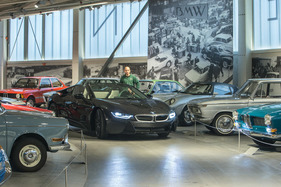From A for Alfa Romeo, to M for MG, or E for electric vehicles, K for Klausenrennen and S for Scheunenfunde, the 23rd special exhibition in the P for Pantheon has arrived at B for BMW after 10 years.

The Bavarian Motor Works are represented with around 30 cars and 15 motorcycles. From the AM4 3/20 to the i8, a wide range of vehicles with the distinctive blue and white propeller as a trademark from the period from 1932 to 2018 can be seen.
Established
Today, BMW is one of the three major pemium manufacturers and enjoys great popularity at home and abroad with its individual model range.
It was not until 11 years after the founding of Bayrische Motorenwerke in 1917 that BMW Group AG presented itself as we know it today - as an automobile manufacturer. With the purchase of Fahrzeugfabrik Eisenach, the first cars with the BMW propeller hit the roads in 1928. Until then, the company had been almost exclusively involved in the construction of aircraft engines. Franz Josef Popp, Chairman of the Board of Management of Bayrische Motorenwerke from 1917 to 1942, had left his mark on this field of business.
At the beginning of the First World War, Popp was responsible for aircraft engine production as an engineer at AEG and later at Austro-Daimler-Werke in Vienna. In September 1917, he was elected managing director of Rapp-Motorenwerke, which was then renamed "Bayrische Motorenwerke".
After the First World War, the construction of motorcycles was started as a new business segment.
The recognition of the motorization of new social classes brought BMW a rapid rise. The takeover of the Eisenach vehicle factory with the automobile product was only a logical consequence. The first automobile was the BMW Dixi 3/15 PS, an Austin Seven built under license.
It was not until July 9, 1929 that BMW presented its first own automobile to the public. They publicized the new car with a festive presentation in the new BMW sales outlet in the center of Berlin and a full-page advertisement in the press.
The modern, small Dixi 3/15 PS was immediately well received by the public. It also made sporting headlines: BMW immediately won the 1929 International Alpine Rally, which lasted five days and led over all the major mountain passes. In addition to its reliability, its economy and price (2200 Reichsmark) also appealed to more and more buyers: At six liters per 100 kilometers, it was more economical than taking the train, even back then. This meant that the BMW was significantly cheaper than a comparable Hanomag and was on a par with the bestseller of the time, the Opel "Laubfrosch".
By the spring of 1930, BMW had expanded its range of vehicles with further variants, such as the two-seater Sport, the four-seater convertible and the "delivery van". Later, the 18 hp "Wartburg" sports car and a coupé were added. Within a very short space of time, BMW managed to put a wide range of small cars on wheels to meet a variety of requirements. By the end of this first BMW model series in 1932, there were almost 16,000 buyers.
The first genuine BMW
1932 saw the birth of the first genuine BMW. The 3/20 PS was available as a closed two-door or as an open-top touring car and also as a convertible with four seats. With a twin-tube frame, a swing axle at the rear and independent front suspension, it offered the driving experience of a large car and had nothing in common with the Dixi. Within a year, the 3/20 PS was not only a new car, but also a completely new engine.
In Eisenach, the focus was fully on automobile construction, while Munich was responsible for the four-cylinder engine. The new 20 hp engine with a displacement of 782 cm³ had overhead valves and ran much more smoothly than its English predecessor. The new body also offered much more comfort. A total of 7215 units of this car were built. At the same time, however, a car was being considered in Munich and Eisenach which, with more power, would also generate more sales.
The six-cylinder line
The 303, the forefather of a long and glorious tradition of the BMW six-cylinder, appeared in 1933. For the first time, the 303 also featured the characteristic kidney grille that is still in use today. The completely new 1.2-liter in-line engine proved to be an extremely quiet-running and, with its 30 hp, powerful drive unit and accelerated the four-seater up to 90 km/h. However, the 303 offered too little. However, the 303 offered too little displacement to position BMW in higher classes. For this reason, the 1.2 liter was initially increased to 1.5, later to 1.9 liters and 45 hp. Thus the 3.90 m long 319 was born. It already featured an automatic radiator shutter and hydraulic telescopic shock absorbers.
Despite its success in automobile construction, BMW returned to its original core business, aircraft engine construction. BMW Flugmotorenbau GmbH was founded in 1934 and soon began manufacturing engines for aviation in Munich and Eisenach.
BMW also continued to perfect motorcycle construction, offering the world's first motorcycles with hydraulically damped telescopic forks in 1935 with the R 12 and R 17.
In 1936, BMW entered motorsport with the BMW 328 and with Ernst Henne achieved victory in the 2-liter class at the Nürburgring on June 14. The sports car was faster than the entire compressor competition! Henne crossed the finish line in far superior style.
Within a short space of time, the BMW 328 dominated its class, and even significantly more powerful competitors were often outclassed. 80 hp in the production version with a weight of only 830 kg helped the elegant roadster to achieve impressive performance. BMW was already designing vehicles in the wind tunnel in 1937.
The crisis came in 1945
"At the end of the war, the entire production of the company came to an end without any documents for peacetime production being available," was the first sentence in the report of the Board of Management of BMW AG. A few days before the capitulation, the BMW management tried to avoid destruction and looting,
to avoid destruction and looting. The remaining BMW employees immediately began clearing the premises and kept their heads above water with repair orders for trade and industry. On October 2, 1945, the US military administration confiscated all BMW assets. The entire Board of Management had to leave. The appointed trustee ordered the immediate cessation of all work and began dismantling machinery and equipment.
In Berlin, the Soviets dismantled the entire technical equipment of the Spandau aircraft engine works. The Eisenach plant was expropriated. BMW AG closed the year 1945 with a loss of 20 million Reichsmarks. BMW had practically ceased to exist.
A new start after the war with a motorcycle
While Daimler Benz, for example, was able to resume production of the 170 V model in 1946, BMW remained paralyzed until 1948. Then the American authorities relaxed their blockade and allowed the production of a new motorcycle. The R 24 was presented at the Geneva Motor Show in March 1948 as BMW AG's first post-war product. The single-cylinder machine with cardan drive was so well received that around 2,500 orders were placed within a few days, although no delivery date could be given. It was not until December 17, six months after the currency reform in Germany, that the first series R 24 was completed in a festive ceremony, and at the end of the year BMW AG was able to report sales of DM 4.2 million.
In 1949, around DM 20 million had already flowed into the Munich coffers, and in 1950 sales jumped to DM 36.5 million. In that year, 732,000 driving licenses were issued in Germany alone. This showed how much Germans were striving for mobility. A liter of gasoline cost 60 pfennigs, diesel 32. In 1951, BMW sales rose to 57.5 million DM. From just 126 machine tools in 1948, the inventory multiplied to 1405 units in 1951. In 1952, the model range produced included the single-cylinder R 25/2 and the new R 51/3, R 67/2 and R 68, each with a two-cylinder boxer engine.
Cars again
In 1951, the first automobile was built in Munich, as the Eisenach plant was still under Soviet administration. Series production then began in 1952. The BMW 501, popularly known as the Baroque Angel, was a luxury saloon with the world's first V8 light-alloy engine. Because the company's own funds were scarce, the automobile factory was to be expanded in stages. The expansion was to be completed by the end of 1953. Then, the Management Board hoped, car and motorcycle production would "once again provide the basis for paying a dividend".

It soon became clear that an expansion of the product range was unavoidable; after all, the thirst for mobility also needed to be quenched among the masses. BMW struck it lucky with the start of production of the Isetta. The design adopted from Iso had room for two people and could be entered through a front door. More than 160,000 Isettas were sold, laying the foundation for BMW's successful automobile production and becoming the epitome of the economic miracle.
A direct attack on Stuttgart with the BMW 503 and 507
In 1955, BMW presented the 507, a sports car with a timelessly elegant design to rival the Mercedes-Benz 300 SL. Nobody had expected this: "BMW has even beaten the Italians", said a trade magazine at the premiere of the sports roadster. Yet the designer was German. "The lightweight V-eight cylinder from BMW is probably the happiest synthesis of the art of automotive engineering on this side of the pond and the other side of the pond to date," was what was said about the engine. The 507 wore a completely new, yet characteristic BMW face.
The double kidney grille, not envisaged in the initial designs, was now wide and swept elegantly across the entire front of the car between the headlights. Elongated side lines and a never-ending hood defined the timelessly beautiful design of this dream car.
While development work on the 507 was underway in Munich, Graf Goertz created another coupé, the 503. The two-door model came in both coupé and convertible versions and was clad in a pontoon body that was as elegant as it was modern. "No ostentation, but a noble breed behind almost modest forms, which form an equivalent to the magnificent eight-cylinder engine", the debutant was said to be. No B-pillar disturbs the lines, allowing the four side windows to be fully retracted. Thanks to a narrow C-pillar, the impression of maximum automotive elegance dominated, especially when the windows were open.
BMW almost bankrupt
Although the new V8 BMWs were extremely well received in 1955, 4567 cars sold at the end of the year were not enough to break even. And the Isetta, which tried to compensate for the decline in the motorcycle business from 1954, did not break even until the turn of 1955/56. The motor vehicle industry was booming: production in West Germany alone rose by a whopping third in 1955.
Desperate attempts were made to jump back on the bandwagon with new models: The BMW 600 was intended to meet the demand for a four-seater car. But the 600 proved to be a failure, as customers rejected the front-entry model.
The model range was to be streamlined with two new model series. The 700 as a small car and a 1.6-liter mid-size car still under development were to bring profitability. The BMW 700 had what it took to be a success, but was not yet in production. Land had to be sold to compensate for the current losses.
Things got even worse. In January and February, short-time working had to be ordered and in June, redundancies even followed. When the Board of Management opened the Annual General Meeting for the 1958 balance sheet at 11 a.m. on December 9, 1959 at the Theresienhöhe in Munich, the business losses had accumulated to around DM 49 million since 1954. BMW was a restructuring case and was to be sold to Mercedes-Benz. However, two shareholder representatives succeeded in preventing the sale by showing that over 30,000 orders had already been placed for the new BMW 700.
This commitment impressed Herbert Quandt, one of the major shareholders of BMW AG. After a careful examination of the books and intensive discussions with the works council, Herbert Quandt took over large parts of the BMW capital. The path to the future was clear.
In 1959, the first automobile with a self-supporting body appeared with the BMW 700. But it was with the BMW 1500 at the latest that BMW established itself as one of Germany's leading automobile manufacturers. This development led to BMW withdrawing from aircraft engine construction in 1965.
Upswing in the sixties
From 1960 to 1969, production rose from 52,000 to 148,000 vehicles, and turnover from 239 million to 1.5 billion, a more than six-fold increase. The workforce was increased from 7,000 to 21,000 employees. During the same period, the sales organization grew from 1600 to almost 4000 contractual partners in Germany and abroad.
In 1966, the BMW 1600 appeared, which was the basis for the very successful 02 series, which was built until 1977. At the same time, BMW also produced vehicles in the luxury saloon segment from 1968, such as the 2500 and 2800, to cater for the luxury class. The top model, however, was the 3.0 CSL, which not only caused a sensation on the road, but was also used very successfully in motorsport.
BMW reacted early to the ever-declining motorcycle market and recognized the motorcycle as a leisure vehicle. The purpose of these motorcycles was no longer to provide a cheap means of motorized transportation, but to be fun to ride. After only just under 5,000 machines were sold in 1969, 1970 brought a turning point with the new R 50/5, R 60/6 and R 75/5 models and production rose to over 12,000 machines and just two years later to more than 21,000.
1972 saw the launch of the five-series, another milestone in the company's automotive history. The appearance of the new 520 and 520i models was characterized by a fresh design language. The large window areas and the low beltline were the most striking features of the new shape, along with the typical twin headlights. BMW thus created a style that was to last for decades.
The three-series as an economical basis
The BMW 3 Series came onto the market in 1975. As a technical development of the 02 Series, it was clearly related to the 5 Series in terms of appearance, but was still independent. It was characterized by its pronounced wedge shape, which was somewhat criticized by the public at the beginning.

The interior was also completely new: the dashboard had a center console angled towards the driver, which became typical of BMW interiors for many years. The three soon overtook the 02, as the one millionth three rolled off the production line in May 1981, making it the most successful BMW.
Large coupés
In 1976, the 6 Series was presented as an elegant, understated luxury-class coupé, which was available exclusively with six-cylinder engines throughout its entire production run. By the end of production in 1989, more than 86,000 units had been sold. Never before had a BMW Coupé been more successful.
The following 8 Series became another technological milestone in BMW Coupé history with more than 31,000 units sold between 1989 and 1999: With the 8 and 12-cylinder engines, the 8 Series easily catapulted itself to 250 kilometers per hour and enabled the exclusive circle of its customers to enjoy completely new driving dynamics.
The M1 with mid-engine
The mid-engined M1 sports car was created in great secrecy at the end of the 1970s and was used as a racing car in the ProCar series created for it as part of the Formula 1 supporting program in 1979. This car was powered by a 3.5 liter in-line six-cylinder engine installed longitudinally in front of the rear axle.
In the road-going version, it produced 277 hp. Even when stationary, the M1 radiated superior dynamics. At the time, only a handful of cars in the world were able to sprint from 0-100 km/h in less than 6 seconds and from 0-200 km/h in just over 20 seconds. The chassis, which was designed for the 470 hp Group 4-M1, could easily cope with the braking, acceleration and lateral acceleration forces that occur in racing.
The crowning glory with the M3
The M1 era had barely come to an end when the M3 was born in 1986. The compact two-door car based on the E30 three-series represented the first parallel development of series production and motorsport for BMW. The road-going version - 5,000 of which had to be available within a year for homologation as a touring car - was built in accordance with Group A regulations from the outset. BMW did everything right and the M3 became the most successful touring car ever.
The Group kept looking for niches and found them. As early as 1988, the roadster was revived in the form of the Z1. The Z3 followed in 1995 and was very successful as a relatively inexpensive sports car. At the turn of the millennium, BMW paid homage to the beginning of its roadster history with the 507 in the form of the Z8.
The entire BMW history in a special show
The special show that has now opened at the Pantheon Basel/Muttenz allows visitors to discover the entire history of BMW.
Vehicles from all eras are on display, including rarities such as the 3200 CS (Bertone) or the Hurricane developed by some creative Swiss. Motorcycles and automobiles are on display and, of course, the cars that combine these two vehicle categories, namely the BMW Isetta and the BMW 600, are not missing.
Lovingly put together and filled with rare and special vehicles, a visit to the special exhibition in the Pantheon is definitely worthwhile, especially as you can also eat and drink in the museum restaurant after your visit. There is still plenty of time, by the way, as the exhibition can be visited until April 2019.
Further information can be found on the Pantheon website.
